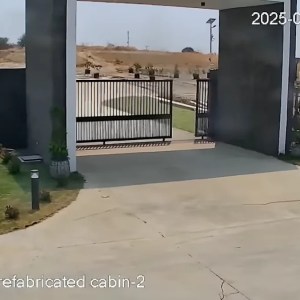Earthquakes can be both terrifying and transformative. They change landscapes, often revealing their power over time. Recently, an earthquake in Myanmar gave scientists a rare opportunity to capture this force on camera. Researchers from Kyoto University published footage that shows a fault line moving in real-time. This is the first known video of a strike-slip fault, highlighting ground movement previously studied only through seismometers.
The March 28, 2025, earthquake, measured at 7.7 on the Richter scale, struck near Mandalay, Myanmar. Although the main rupture lasted only about 80 seconds, it led to over 5,000 deaths and 11,000 injuries. This event is the second deadliest earthquake in modern history and the strongest to hit Myanmar in over a century. Interestingly, the southern part of the fault ruptured at a speed of 3.7 miles per second, known as “supershear velocity.”
An outdoor CCTV camera, nearly 75 miles from the epicenter, recorded dramatic footage of the ground. What looked like solid earth suddenly split and moved apart. Researchers realized they could analyze this visual data for insights into tectonic activity, something they hadn’t been able to do before.
Jesse Kearse, the study’s lead author, expressed surprise at the video’s detail. He noted that this kind of information is crucial to understanding how earthquakes happen. The researchers used a method called pixel cross-correlation to break down the fault’s movement frame by frame. They discovered the fault slipped horizontally by 8.2 feet in just 1.3 seconds, reaching speeds of 10.5 feet per second. These findings align with existing knowledge but also introduce new aspects about how these events unfold.
According to Kearse, the quick movement indicates a concentrated slip, similar to how a ripple moves across a rug when flicked. They also found that the fault’s path was slightly curved. This could suggest that curved movement is more common than previously thought.
These insights are not just academic. They have real-world applications. By understanding how faults behave, experts can develop more resilient building designs. This means that the next time an earthquake hits, the damage may be less severe. Real-time data, like what this video provides, is a valuable tool for improving earthquake safety.
The earthquake has also sparked conversations on social media about preparedness and safety. Many users are discussing ways to better equip buildings and communities to withstand such powerful natural events. The video serves as a reminder that while we can’t prevent earthquakes, we can learn from them to protect ourselves and our surroundings.
For a deeper look into earthquake resilience, you can explore more through [Popular Science](https://www.popsci.com/environment/earthquake-engineering-buildings/).
Source link
Kyoto University, strike-slip fault, seismologists




















